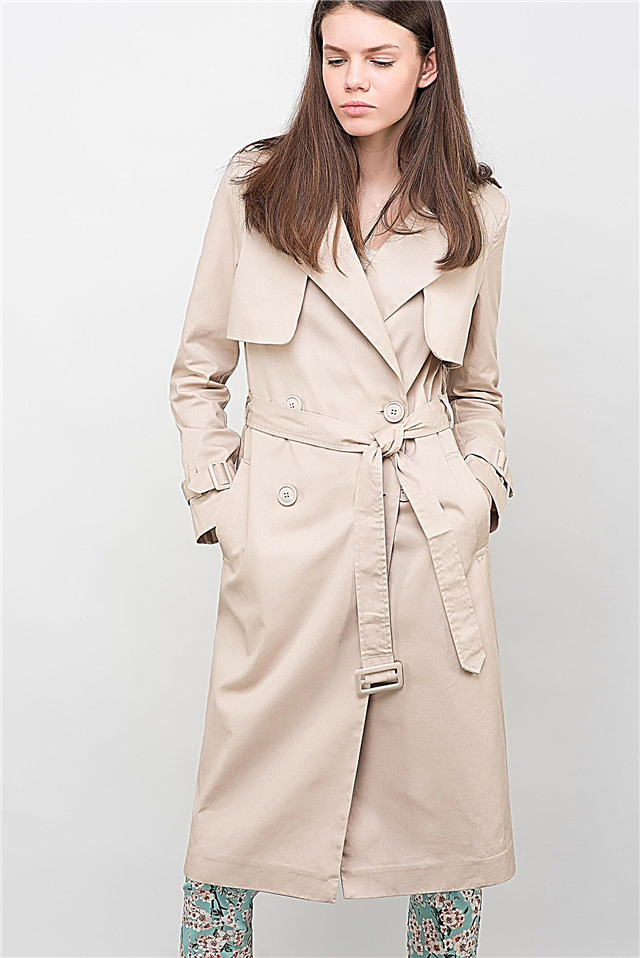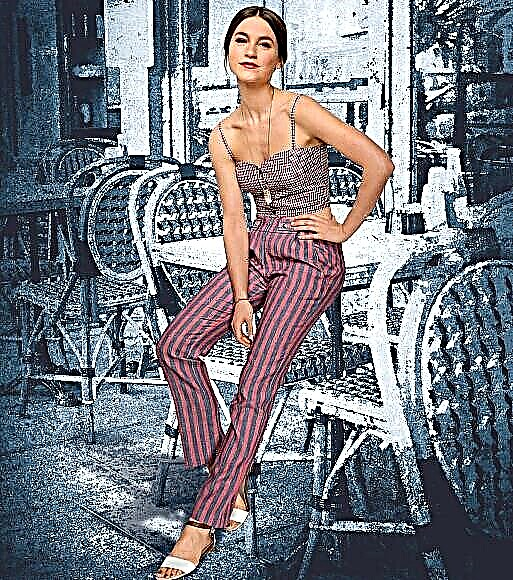Share
Pin
Tweet
Send
Share
Send
The role of Coco Chanel, who stole the Deauville jersey vest in the most hooligan way, transforming it into the peak of the style, elegance and charm of our wardrobe, can not be overestimated.
“As far as pleasures are concerned, women are in a much better position than men: there are far more bans for them.”Oscar WildeNo fabric has ever raised as many questions as jersey. There is nothing special about this material at first glance. We used to consider her knitwear. Her once-revolutionary role in a female costume was pretty worn out.The well-established view that "in 1916 Chanel took on a jersey knit fabric, previously used mainly for sewing men's underwear, and created a female outfit from it," (as Tim Gunn puts it in his Fashion Bible), prevailed over the rest of the facts. Undoubtedly, the almost deified appearance by the priests of fashion to the world of Gabrielle Chanel, also revered as Coco Chanel, is a completely natural consequence of the "paradise for the female body" she organized, a coup in the fashion world, which addresses the freedom and independence of women in the world. Rather, men were thrown into dependence on a female whim in clothes. After all, they had to, almost literally, sacrifice their last pants, if only to preserve the ghostly dominance of males in politics, business and finance, while losing the role of arbiter elegantiarum to those to whom it was intended by nature itself.

In the photo: cocktail set
Designer: Coco Chanel
Date: Around 1964
The woman was always elegant, although this was stubbornly hidden for centuries by the multi-layered costume, and only with the appearance of a silk jersey did the female body dare to openly reveal itself in the light that, shocking respectable housewives, secretly admiring the manners of the second half of humanity, it firmly established itself, as they say, on most prominent place, ending with centuries of prejudice.

In the photo: evening dress
Designer: Madame Gray
Date: fall / winter season 1954−55
The role of Coco Chanel, who stole the Deville vest from a jersey in the most hooligan way, transforming it into the peak of the style, elegance and charm of our wardrobe, can not be overestimated. Along with other model feats, her image will forever be imprinted in warm hearts and quivering souls sewing beauty and wearing jersey with pride! However, we are thinking about this at the very last moment, although some jersey, like that oats, is now also expensive.

Photo: frame from the movie "Chanel"
However, be that as it may, one should remember the names of those who were the forerunner, and maybe the legend of this magnificence. Who pointed the way and continued the great victorious procession of bodies with proudly raised heads, bearing confusion and embarrassment in the still fragile consciousness of that half of humanity, who thirsted, waited, admired in a mustache, but was embarrassed to show these emotions in people.
The brilliant “Lily of the Jersey”, nee Emily Charlotte Le Breton, aka Lilly Langtry, the prototype of many artistic creations from fine art to literature, from music to cinema. Remember the “same woman” of Holmes, with Sir Arthur Conan Doyle, “Fan of Lady Windermere” by Oscar Wilde, “The Moon and Grosh” by W. Somerset Maugham. It is believed that it was she who first drew the attention of fashion to this simple, in fact, matter, of the same name with her native island of Jersey, from which this simple knitted fabric moved to the mainland. First to France, then everywhere. Knitwear (tricotage) because the French word meaning - knitwear.
Gabrielle Chanel herself exclaimed: "God, I would have known this before! When I started working with her, what a complicated fabric!" And this is it about jersey.

In the photo: blouse
Designer: Coco Chanel
Date: 1930−35
“By the 1920s, everyone was already sewing women’s clothing from jersey, and now most of the women around are dressed in lightweight stretch fabric that would come down only for men's underwear a hundred years ago,” Tim Gunn said sarcastically. This fabric still does not give men rest. But I think that the point here is not at all the fabric. Since the shorts mentioned by him testify that those very last trousers were nevertheless taken off.

In the photo: dress
Designer: Cristobal Balenciaga
Date: 1955−56

In the photo: dress
Designer: Coco Chanel
Date: Around 1924
According to GOST, a jersey is called a warp knitted fabric made of woolen, cotton, silk or synthetic threads, formed from all warp threads when each loop is knitted with its own thread. At the same time, knitwear refers to fabrics produced on various types of knitting equipment from various types of raw materials and intended for the manufacture of various types of products.
As you know, the first knitting machine was invented in England in 1589. It was a flat hand knitting machine. Before that, they simply knitted or crocheted. So this machine was called culinary, that is, hosiery. William Lee, assistant parish priest, invented it for his bride, who made a living by knitting a stocking. And once on the island of Jersey, wool was obtained from the wool of sheep and knitted from it warm, simple clothes for ordinary people.
When in the nineteenth century, manufacturing began to develop rapidly, and in particular, knitting machines became more complicated, with the invention of a more complex needle for a knitting machine that had a reed structure, knitting production was able to produce various combinations of knitted fabrics. But the jersey was still called fabric, obtained by single-row weaving loops (single knitting). Now even the interlock (double knitted) is called (interlock) jersey.
The similarity of the methods of manufacturing knitted fabrics with a knitted jersey fabric allows us to talk about the "knitted" nature of the fabric. The only difference is as follows. Single row lighter, 140 g / m², very flexible, resistant to blooming. Due to the tilt of the loops when knitting, it is different on the front and back sides, it is thin and has excellent fitting properties, but at the same time it perfectly "holds the shape" if you can give it.

And the first who did this with the jersey was the dressmaker Jeanne Margin-Lacroix. On May 10, 1908, a commotion arose at the races at the Longchamp Racecourse. An unprecedented event has occurred that distracted the audience from the races. Three graces appeared, dressed by the standards of those times in nothing, that is, from the point of view of the public, almost naked. Dress Directory. That's the name her dresses got.
“I have been patiently educating the public for years in what women's clothing really is,” she said. “These are just two covers. The first is an elastic silk jersey, and the second to serve as a supporting bodice with little use of a whalebone, but not enough to constrain movement.” In addition, the dress was worn completely without underwear. The appearance of a lady in such a dress in London nearly killed Churchill, since his charioteer could no longer follow the road.
Following the Longchamp incident, Lily Langtry was already photographed wearing a Directory-dressed dress for a walk with the Duke of Westminster.


And now we just sew what we want out of jersey, without making a splash and not terrifying a respectable public, perceiving clothes from jersey rather as convenient and effective, in the ongoing struggle for freedom of form, trying to draw attention to the content, that is, that that is clothed in this form. Sometimes forgetting that examples should be taken from these photos, and not the noisy gloss of mass sales.
Photo: Oksana Tumantseva

Oksana Tumantseva
In her own words: "... what is mine is mine. I sew by calling, because it’s nice, exciting and allows at least a piece of matter to translate into a finished image."
He leads his own public VKontakte about the vestigial. "Not haute couture, but yourself!" Always original and most accurate information from the world of fashion, tailor's art, a fresh look at trends, technologies, questions of the practical application of traditional methods, the revived history of fashion and sewing, the revealed secrets of modern masters, cultural dialogue, lively communication, without advertising.
Share
Pin
Tweet
Send
Share
Send



